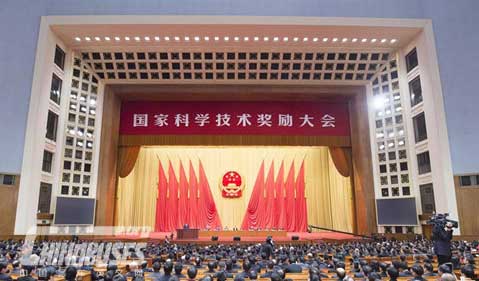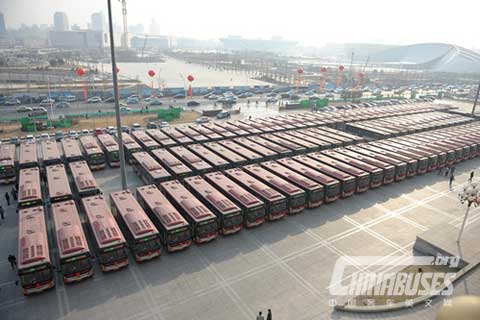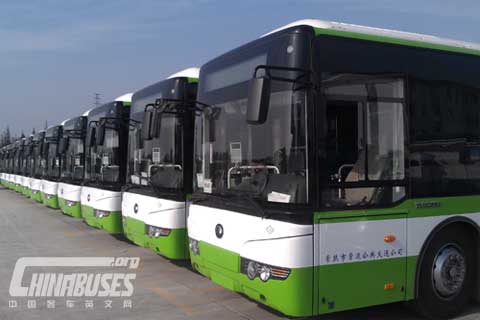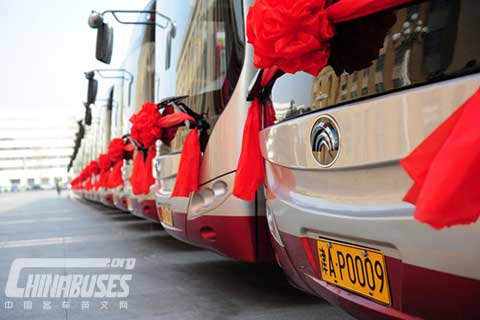On January 8, jointly hosted by CPC Central Committee and the State Council, China’s National Science and Technology Award Conference was held at the Great Hall of the People. Xi Jinping, Chinese president, Li Keqiang, Chinese premier and other key leaders attended in conference.

Yutong won 2015 National Science and Technology Progress Second Award. The energy-saving and new energy bus key technology R&D and industrialization project led by the bus maker has so far generated handsome economic returns. In the new energy vehicle sector, Yutong has made new breakthroughs in a number of key areas, such as high energy efficient driveline systems, battery integration and management, vehicle control and energy conservation. Thanks to its impressive achievements, Yutong is the only enterprise in China’s auto-making industry to gain such a highly sought-after honor.
After a decade’s relentless efforts, Yutong has developed full electric buses, plug-in buses and hybrid buses. Through constant innovation, it now boasts a wide spectrum of eco-friendly vehicles, ranging from 6-meter to 18-meter buses in length. Its energy-saving and vehicle control technology, high-voltage insulation power switch technology, high-density electric drive control technology have already reached the internationally advanced level. So far, it has obtained 23 invention patents, 142 new application patents, and 14 software copyrights. Moreover, it has four national-level and industry-wide standards and has published 23 research papers.

“For a long time, China’s new energy vehicle sector has been plagued by a number of problems. Specifically, we were overly reliant on imports; our integration level was low; our production cost was high; our battery could only last for a short period of time; our products were not quite adaptable to the environment; our products were not able to drive continuously for a long distance,” Wan Xinming, vice-president of China Automotive Engineering Institute, pointed out. However, Yutong has three breakthroughs on technological bottlenecks that prevented the energy-saving and new energy bus sector from growing faster. The breakthroughs made by Yutong will be conducive to the popularization of full electric, plug-in and hybrid buses.

Currently, some key technologies developed by Yutong have been applied in a series of energy-saving and new energy buses, ranging from 6-meter to 18-meter in length. Yutong has already obtained 112 product notification, covering super-large-sized, large-sized and medium-sized buses which are designed for such segment markets as urban public transportation, intercity passenger transportation, airport passenger transportation, business reception and group tourist transportation.

As of November 30, 2014, Yutong had realized a total sales revenue of 10.332 billion RMB in its energy-saving and new energy bus business. Along with the rapid expansion of its new energy buses, it has successfully pushed the robust growth of related sectors, such as raw materials, spare parts, assembly and services. All together, it had helped to realize an added industrial value of over 50 billion RMB.
“Judging from the explosive growth of new energy bus market in 2015, conventional buses are now threatened to lose even more market shares,” some experts say. Last year, the percentage of new energy buses jumped to 47.81% in China’s urban public transport sector. Now, it is set to rise further. Also, new energy buses have been gaining recognition in inter-city passenger transportation and tourist transportation markets.
As of October 2015, Yutong had successfully sold 23,796 units energy-saving and new energy buses. All together, these eco-friendly vehicles can help bus operators save fuel by 93 million liters and gas by 200 million Nm3. Each year, they will cut fuel costs by 1.4 billion RMB, cut carbon emission by 640,000 tons and reduce PM2.5 emissions by 79 tons.
In 2012, China set a development goal for the nation’s new energy vehicle industry. To achieve the goal, the government has launched a host of favorable policies, such as purchasing subsidies, priorities for roads and vehicle license plates. Made in China 2025 initiative, which was released only recently, clearly shows the government’s determination and continued support for the development of electric and fuel-powered vehicles. Among the Recommendations for the 13th Five-Year Plan for Economic and Social Development issued by CPC Central Committee, the popularization of new energy vehicles is high on the list.
Despite the sluggish overall market conditions in China in 2015, new energy vehicle sector, in sharp contrast, witnessed a super-high speed growing momentum, the electric vehicle and the plug-in hybrid vehicles, in particular saw three-digit growth in both their production and sales.
According to the statistics released by CAAM (China Association of Automobile Manufacturers), China sold 171,145 unit new energy vehicles from January to October in 2015. Thus, China is expected to surpass USA with an annual sales volume of 180,000 units eco-friendly vehicles as world’s largest new energy vehicle market.
“China’s auto industry has gradually completed restructuring and has made a number of technological achievements. Thanks to the concerted hard work of all enterprises involved in this sector, it has laid a solid foundation for its sustainable growth in the future. Through the fast industrialization of some technological advanced products, the industry is now able to meet the diversified needs of the ever-growing market,” Wan Xinming says. Other industrial insiders also point out that the sound development of China’s new energy vehicle industry requires every auto maker to comply with industrial regulations, speed up their product innovations and boost the quality of their products. With all these preparations, China is right on its way from a big automobile manufacturer to an internationally competitive auto maker.